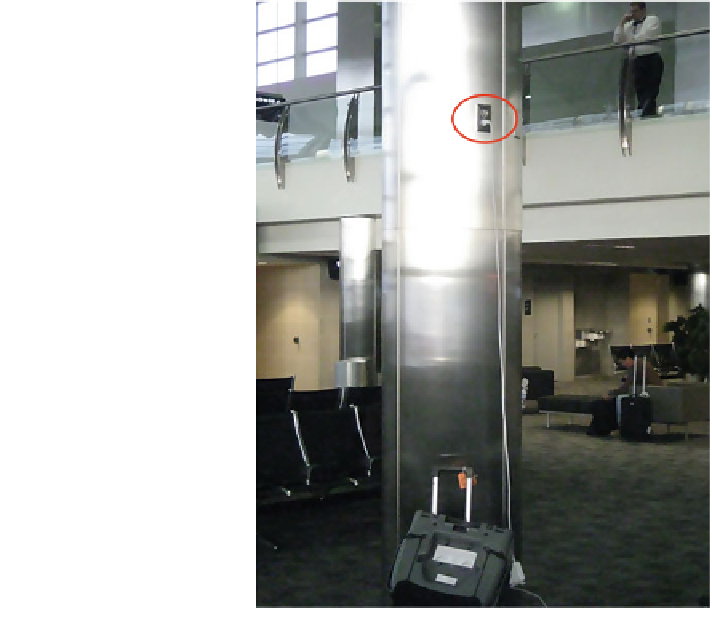Information Technology Reference
In-Depth Information
Table 12.4
Design principles derived from Norman's analysis to make the Gulfs wider where
appropriate
1. Hide components: Make things invisible to help make the visible easier to see, and what should
be hard to find (because it is uncommon or unhelpful or dangerous), is hard to find
2. Avoid natural mappings for the execution side of the action cycle, so that the relationship of the
controls to the things being controlled are inappropriate
3. Make the unavailable action physically impossible or difficult to do
4. Require precise timing and difficult physical manipulation
5. Do not give any feedback
6. Use unnatural mappings for the evaluation side of the action cycle, so that the system state is
difficult to interpret
Fig. 12.3 An electrical
outlet (circled) on a column
designed to be difficult to
use?
To fully understand the Gulfs, designers need to understand perceptual and
cognitive psychology fairly well (which is partly why we have included lots of
information on cognition and perception in this topic). To apply this approach the
designer has to be able to accurately judge the Gulf of Evaluation, which implies
understanding how the user perceives and interacts with the display. It also



Search WWH ::

Custom Search